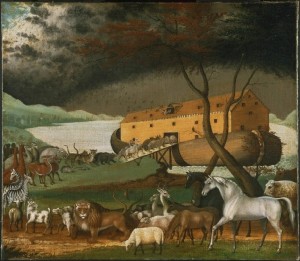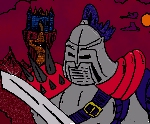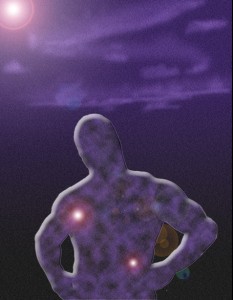This is mark Joseph “young” blog entry #18, on the subject of A Novel Comic Milestone.
This is about the creation of my book Verse Three, Chapter One: The First Multiverser Novel, now being posted to the web site in serialized form. This “behind the writings” look definitely contains spoilers, so you might want to read the first few chapters before reading this look at them. That link will take you to the table of contents for the book; links below (the section headings) will take you to the specific individual chapters, and there are (or will soon be) links on those pages to bring you back hopefully to the same point here.

From time to time I pick up my old books and read them again. I don’t think this is conceit. For one thing, I pick up and reread books by quite a few authors–Tolkien’s trilogy, Moon’s Paksenarrion series, the Teddy London Books by Henderson, anything by C. S. Lewis, and many books that are of no particular interest but that someone gave them to me and I have them here. For another, writing an ongoing series requires that I maintain continuity, and thus that I remember the histories of my characters, including the negatives. It is relatively easy to remember all the things they have done; it is much more difficult to remember the things they could not do, such as that Bob Slade was never a Boy Scout. So I read them.
Why that matters is that when I read them, I remember things few others would know. That is, I remember what I was thinking when I wrote them, and why I wrote what I did, and what I changed and what it was originally. I remember conversations with editors, conversations with friends, discussions, decisions, ideas. Perhaps they are worthless; but perhaps someone might be interested in how the writing process developed over time. That seemed worth sharing, and so periodically, if traffic to these pages shows interest (I get specific page traffic reports on the blog; for the web site otherwise I only get total traffic and have to guess at what’s popular by the e-mail and comments) I’ll keep it going.
Originally, Ed Frost, briefly President of Valdron Inc, wanted to launch a Multiverser comic book. It fell to me to write the stories, which were originally sketched in a panel-by-panel format. The plan was that the first issue would introduce Kondor and Lauren, then the second issue would continue Lauren and introduce Slade, and then the third issue would continue Slade and Kondor, and from there we would rotate the stories so that each issue contained stories from two characters, each character vanishing every third issue. For better or worse, after I had written six installments, what became the first six chapters, the artists said it could not be done without significantly more staff, and the comic was dropped. I later picked up the stories and began restructuring them into novel form. That makes these first six chapters something different from the rest, because while they were being written this was envisioned as the beginning of a comic book series running three separate characters, and with the seventh chapter it was being re-thought as a unified novel.
One aspect of the original comic book plan was that each section had to end on something like a cliffhanger; that is, because it would be sold serialized, you had to want to read the next part of the story so you would buy the next comic to see what happened. Thus there is a fair amount of action in the early chapters to create that kind of tension. Apart from that, though, I had long ago observed, reading Lord of the Rings and Dune, that having stories set on multiple stages with unanswered questions in each pushed the reader forward, wanting to know what would happen next to Frodo or Paul Atriedes, and so I tended to retain that concept of ending chapters at a point at which the reader wants to know what happens next, and then jumping to a different character. Had I stuck with the comic book concept, of course, it would have been possible to follow the chapters of one specific character; it is not impossible to do so, and some who have read the book and then returned to it have followed one particular character through all his (usually Slade’s) chapters, but since they eventually come together it becomes necessary to read the intervening chapters to know what the character does between his own story entries. The character by which each chapter is identified is in essence the viewpoint character, the one whose perceptions, thoughts, and feelings give us the events.
Chapter 1, Kondor 1
My recollection is that Jim Denaxas gave me the Kondor name, although I am uncertain of that. I wanted a name that would convey strength; this character was from the beginning envisioned as what might be called disciplined, having a structured life and approach to reality and a strong moral core.
At the time I started writing this, all Multiverser player characters started in NagaWorld, which was a world created by E. R. “Ed” Jones. It is a world with many secrets, and I did not wish to reveal them in the novels, but I did not at that point wish to suggest that these characters had not been to the one world which, in my mind at the time, all characters knew. (That changed in the early years of play, first because I did not wish to post the secrets about NagaWorld to online sources, then later because we learned that for the purpose of demo games it was better to begin players in worlds that did not have the potential for long-term play.) Thus all three characters make allusions to different parts of NagaWorld. For Kondor, it is suggested that he began in or near the Glass City, and was killed by one of the “giant robot spiders” that patrol its streets. The first paragraph briefly references that fight, and the story continues from there.
Kondor draws largely from a character renamed Peter Adams in the game books, originated by Richard Lutz, whom I never met nor saw. The concept that he was military arose partly from the fact that Ed Jones had been military and had playtested the earliest Multiverser games with military players on bases around the world, including Lutz. It was fairly standard in those days that player characters took their standard duffel bags, and were killed by some army experiment, so Kondor’s start recalls that.
The Mary Piper was a world I had created for Multiverser: The First Book of Worlds (which also contains NagaWorld). It had in some ways been a demonstration of a principle, that you could use the same ideas to create very different worlds by changing setting or genre elements. In this case, the world book presented side-by-side two trading vessels, one in a post-medieval early gunpowder world, the other as an interstellar spaceship. I wanted Kondor to start on the spaceship, because I wanted one of my three stories to begin in a science fiction setting, and this was a setting I had already designed and could write fairly easily.
I made First Officer Jamison black because it gave me an easy way to describe Kondor: with twenty-seven crewmen there was a reasonable chance that one of them would look generally like him, and given that I wanted Kondor to convey an air of discipline, making it the first officer gave me that. Jamison has been black in every game version I have run since, although prior to that it was never mentioned.
When I run the space version (called Mary Piper Beta) it is always supposed to be a surprise to the player character that he is on a spaceship. I wanted to capture that, too.
Chapter 2, Hastings 1
I created Lauren Hastings so I could tell some of the stories from the games in which I was a player. Because in that sense she would be me, I wanted to make her different, although I long wondered whether I made her a woman because she was so like me and I needed her to be different, or whether I made her so like me because she was a woman and I needed that point of contact.
Her first world (after NagaWorld) was also mine, except that when Ed Jones ran me in this vampire-filled world (a variant of the World of Darkness published by White Wolf) it was set in Chicago. I have never been a city boy, and do not know my way around even those cities I have visited; but my real-life exposure to Chicago amounted to having ridden in my father’s car a few miles along the beltway as boy and hearing some years after that that they built the Sears Tower, which gave it the tallest building in the world at that time taking the title away from New York City. I moved my character to Philadelphia because I had been at that point living in its New Jersey suburbs for a while and knew I could make at least a few real geographical references with accuracy.
The blast mentioned was also the way my character left Nagaworld, trying to create a kau sin ke that was a psionic device and getting caught in the explosion that came from my botch. I actually had some problems at this point, because I was giving Lauren the backstory of having stayed at Umak Tek, the city that “I” built in Nagaworld, and conducting at least that one of the same experiments I had conducted, but was not making her the architect of the city, so I was always a bit uncertain exactly what she actually did while there, other than learn a lot from what I had left behind.
My wife’s comments on the first draft included that she did not find Lauren credible because a young mother who had been separated from her children would have thought about them more. I integrated a lot more of that before it went to the editor, but I do not now remember which comments were part of the original effort to define her and which were added later.
I had a kau sin ke, a gift from my players for a game prop, but a real weapon nonetheless. Like Lauren, I played with it a bit, but never had any training; still, I could flick the end out threateningly and flip it back to my hand, spin it in a figure eight in front of me, and snap it like a whip without hurting myself; and I had a character in another game, a D&D variant, who was expert in it, so I’d spent some time thinking about how it could be used.
Gavin and Jackson were very much Ed’s inventions originally; I’m not certain whether I even changed their names. I had come to realize that Ed not only plagiarized most of what he used, he encouraged the practice for gaming, so I was always careful about what I took from his games–not because I was worried about stealing from him but because I was worried that I would take something he had stolen from someone else. However, he expressed confidence that Gavin was an original of his, and Jackson was never developed beyond sidekick muscle, so they were safe choices.
I had a bit of trouble when Lauren says she is not a scientist. I had played that scene, and said that I was an alchemist, by which I meant that I had dabbled in the chemistry of another world to create some of the materials I was using (which Lauren also uses, but never claims to have created herself). Yet the “Alchemist” title was to some degree associated with that character, and I did not want to connect it to her. My eldest had become “the Psientist”, but I realized that were she to use that word it would not sound to the ear different from “scientist” and it would be foolish to suppose Gavin to have heard something different. Thus I fell back on “psionicist” as the best available choice. Since most of Lauren’s powers to that point were psionic, it fit.
The Pit was inspired by a place Ed presented called the Succubus Club, but I changed it. For one thing, I wasn’t certain he hadn’t lifted that from some other source. For another, it was too blatant. There are a lot of restaurants that use the word “pit” in their names, and I thought that one called simply “The Pit” would be able to slip under the radar as a hellish reference most would take as simply a name for a place that flame-grilled steaks and chops.
Father Matthew James was taken from a player character belonging to one of Ed’s players, who had been playing as a human vampire hunter in that universe for quite a while and, along with the other player character, was running scared. Ed injected my character into their game to give them a boost, someone to help them and get them moving in a positive direction instead of playing defense. I changed the name and am not certain I remember the original. He was a priest, though, and many of the details here are from that character. The mission, too, was part of his background, but it had a different name. I gave the priest two Bible names, partly because I knew I could remember them.
I liked Saint George as the name of the mission; my editor Steve Darlington did not, saying that it was rather militant (George was a knight and dragon slayer, according to the legends). However, his criticism only strengthened my resolve, and I addressed it by having Lauren recognize the peculiarity of the name.
I knew that Lauren in her future was going to visit this world in its past, but although I made Jackson wary I had not yet decided she was going to have encountered him in that past.
When I picked the date for the paper, it was for me the near-term future. As problems delayed events it loomed closer, and I worried that I should push it back; but the eclipse–well, that should be mentioned when it arises.
My Australian editor did not know the names of the people I placed in significant positions in the United States, and I had to tweak some of the headlines, too, to make them a bit more depraved. His rational tolerance saw no problems with pagan religions having more visibility and he had never heard of Ashtoreth. I swithered on the subject of how to get the impact I wanted.
Chapter 3, Slade 1
I wanted a middle name for Robert Slade, and it was again Jim Denaxas who suggested “Elvis”. He said to trust him. The name has never mattered yet, but I always remember that he said it would be useful. It does to some degree give him a rough date–obviously his mother was an Elvis fan.
From the beginning, Slade was very much a cross between the characters of Ed Jones and Chris Jones. He was tall and lanky, like Chris, and was never entirely serious about anything; but the Nordic religion and the justification for it came from Ed’s character. Both of them are dark-haired, but I wanted Slade to be blonde partly for contrast against the other characters (I always envisioned Lauren as a brunette) and partly because a blonde Norse warrior is more appropriate. Yet I wanted him to be a bit awkward and humorous. Since this was originally intended as a comic, I suppose that some of the influence came from DC Comic’s Super-Elastic Plastic Man, a superhero who seemed to joke his way through his adventures. I wanted Slade’s antics to bring smiles to faces, and so set a different tone from the other two. It seems to have worked–he is usually the one readers mention liking most.
I had started Kondor in a science fiction setting that was space-based, and Lauren in a modern horror setting (although not so much a horror story), and since part of the point was to show that Multiverser could handle all kinds of worlds I wanted something on the swords-and-sorcery medieval fantasy line for Slade. I thus went for a D&D style dungeon crawl, and rather than worry about how I would induce Bob to go on such a quest, I simply dropped him in the dungeon and gave him the task of finding his way out.
A lot more of Bob’s story was for the eye, and I had more trouble converting it to text than the others. Right up front, I had envisioned mostly black panels with partial illumination when the torch lit, but only sketchy images of the attacking beast. I thought of him as less disciplined than Kondor, less educated than Lauren, definitely blue collar, working in an auto repair shop of some sort. This also gave him tools, which I wanted to have because it would let me do some of the Gamma World game stuff about using tools as weapons.
His reference to pirating parts places him at what is perceived in NagaWorld as some kind of industrial complex spanning the northern horizon but is known to be a fully automated battlefield in which machines fight each other. This meant that my three characters were all in the same world, but far enough from each other that there was no chance they would have encountered each other prior to this.
I wanted to pepper his speech with a lot of references both Norse and modern cultural, and started immediately, with the name of Loki and the Wizard of Oz quote about fire for the scarecrow.
I have never used a self-lighting blowtorch, but I would think they exist. I can see easily enough how to make one.
I’ll credit Telly Savalas with the stick match idea. I’d read about different ways people attempt to quit smoking based on different stimuli causing them to smoke, and Kojak’s lollipops are a replacement therapy for the constant hand-to-mouth contact smoking offers. I went with stick matches, because a lot of boy scouts carry a match in their mouth around camp just to have it convenient (I think I may have done so at one time).
The Cerebus-model three-headed dog or wolf is a popular dungeon game monster, and it let me bring in the gaming reference and set the tone of a monster-filled tunnel complex.
Ed and I both flipped invisible coins; there’s an article entitled Game Ideas Unlimited: Invisible Coins that talks about them. Thus I borrowed the coin flipping from Ed, but made it real and gave it power by incorporating the prayer to the fates.
I think the original function of the room was to give Slade a magic torch, so that the farce of the perpetual flashlight would not become a problem. However, by the time I was writing this I realized two things–one, that dungeon crawls and brief combats were not all that interesting, and two, that if I were going to make this story interesting I was going to have to turn something into a quest and add some characters. Thus rather early realized that he was going to emerge to discover his three future companions; and I also knew that they would need a reason to return that would include bringing Slade with them. The story of the djinni in the bottle began to take form, and I listed “bottles” among the junk.
My imagery of the tunnels is formed probably from three sources, one the caves of the Smokey Mountains I visited on family vacations as a child, the second years of running D&D games, and the third some glimpses of eighteenth and nineteenth century forts, particularly Fort Mott which guarded the mouth of the Delaware River and had a tunnel leading under the river to a companion fort on the other shore. That tunnel has never been open for my exploration, but it can be seen from the New Jersey side.
My three companions were designed as typical fantasy characters, the fighter, wizard, and thief, and were fleshed out significantly only later.
Chapter 4, Kondor 2
Again, I never had given any thought to the race or color of any member of the Mary Piper crew until I had Kondor aboard. I was at that time sharing the draft with a fan who happened to be black, who felt that color would be a natural connection for a black man out of place, and would make him feel more comfortable (and after all, if there were no non-white humans in this universe, would they not wonder what he was?). So I made Walters black to create a point of connection, that Kondor related well to one of his crewmates.
Looking back, this may have been the beginning of Kondor’s incipient racism. I had not planned it, but it emerged from this.
The sound of the impacts of kinetic blaster fire was my guess at what a weapon would do that hit you with a ball of force; I thus envisioned the invisible missiles as golf-ball sized spheres of forcefield, and assumed that they would bounce off walls with a thud. This had the advantage that they would be likely to do serious blunt trauma to living targets but unlikely to put holes in spaceship walls. The M-16 was more problematic, but here I just assumed that the walls had a built-in resilience that would deflect bullets if they were not too direct.
It is rare in Multiverser for characters to receive crippling injuries, but it happens. Ed Jones’ character is noted for having a robotic arm. I wanted Kondor to have some kind of mechanical prosthetic, and this seemed the best way and the best place to get it. More on that when we get there.
Chapter 5, Hastings 2
I avoided using the name “plastic steel” for the polymer-like material of which many of Lauren’s things are made, partly because it struck me as cliché despite the fact that it’s the term I use for that material in play. Her armor is again like the armor my character made for himself.
Again there was originally a visual expected here, of Lauren sitting in the chair and gradually slouching away into a doze; but that would not work quite so well in text, and since my wife had suggested giving more attention to missing her family I put some of that here on the rewrite.
My character spent a long time in NagaWorld getting in shape and working on acrobatics, and I wanted to introduce that in Lauren early so it would not be a surprise later. She’s not really combat-trained at this point, but has been working with jumps and flips and other acrobatics and gymnastics moves as well as with what she might do with the weapon.
In the game, the priest did a number of things which I knew priests would never do–put holy water in a drinking glass and communion wafers in a sandwich, for example. I wanted to create a similar but credible layer of defense. I began with the assumption that vampires had to be invited onto holy ground, and Father James’ house was a church rectory and therefore consecrated. His invitation is carefully worded to invite Lauren inside but not to invite a vampire.
The mirrored tiles on the walls were a later addition. In the original first draft Lauren was never described until Joe Kondor saw her in chapter 105 (I had, of course, assumed initially that there would be pictures of her in the comic, so a description for the artists would be separate), and when I described what he saw my wife had her immersion snapped because she had always envisioned Lauren as a blonde. I nearly always envision my female characters as brunettes, but I’d never said so; thus I had to find a way to get her description in earlier in the story, and this gave me the opportunity to do so. It also helped that vampires are said to have no reflection, and therefore a mirrored front hall would tend to reveal trouble while looking stylish.
Whenever I have one character explain something to another, I always remember Diana Rigg’s Lady Holiday saying to Miss Piggy, “It’s plot exposition, it has to go somewhere.” Even though it makes perfect sense for Father James to explain the world to Lauren, I tried to make things happen around it that so it wouldn’t be all talk. Had it been a comic, these would have been done in flashback panels; but dialogue doesn’t work that way.
Jake Williams was also the translation of another player’s character to the book, again with the character name changed.
The backstory in the game had the parishioner leaving his money to Father James and the priest retiring; I recognized immediately that that was entirely unlike anything that was likely to happen in the Roman Catholic Church, and so changed it to a trust fund with the priest as named trustee. That’s still a bit iffy, but I think that the church might allow something like that. (I’m a bit touchy about stories that have clergy do things inconsistent with their own faith. Part of that stems from the movie From Dusk Till Dawn, in which a lapsed Baptist pastor creates holy water to use against vampires–a deal breaker for me, because holy water is a sacramental concept used mostly by Catholics and similar “high church” denominations, and does not exist at all in the non-sacramental Baptist tradition. I also seem to recall a mystery in which the detective recognized that a supposed minister was a fraud because the appointments in his office were inconsistent with his claimed denomination, and if you want to use details like that you have to get them right when they don’t matter.)
The explanation of her telepathic abilities was needed because the editor didn’t understand how it worked when I tossed it in unexplained. It is pretty much the standard rule for Multiverser, but I’m also fairly sure it was the standard rule for the psionics in the original Advanced Dungeons & Dragons™ psionics rules, so it seemed natural to me.
The reference to her sleep schedule in NagaWorld is because one of the “alien” aspects of that world is the forty-hour day, twenty of daylight and twenty of moonlight. Players struggle to adjust to it in some way, and the longer a character is in that world the more likely it is that he will fall into some kind of long-day sleep schedule. Twenty-seven awake and thirteen asleep seems to be plausible, and then to stretch it an extra four hours somewhere would not be that difficult if you were already accustomed to that kind of schedule.
Again we have a cliffhanger ending that was supposed to push the reader toward the next issue.
Chapter 6, Slade 2
It was a thought I had pretty much at this moment, that in our world a person raises his hands to show that he is unarmed and not going to attack, but that if a wizard would attack by raising his hands and releasing energy from them in such a world that move would be seen as aggressive. Thus I had Torelle warn Slade not to raise his hands.
Omigger’s reaction to the phrase “auto mechanic” was perhaps the beginning of my games with Slade’s use of modern references his companions would not understand; this one, though, was innocent–it did not occur to him that they would not know. On the other hand, it probably inspired his attitude of using modern references specifically because his friends would not understand them and he would find them humorous in the context. He is essentially telling jokes only he would get, but the reader also gets them (I hope).
My image of Torelle at this point was tall, handsome, probably similar to Slade but not quite as tall and more evenly built. He has something of a commanding voice, not quite Brian Blessed but strong and confident and proper–oh, and an American accent.
Omigger always has a refined British accent in my mind. The name is itself a British joke. Some years before we saw a Peter Davison Dr. Who episode in which they kept making reference to a great ancient Timelord, which was pronounced OH-mih-guh, and we took it to be “Omigger”; then we saw the title, which was “Omega”, a word which Americans pronounce oh-MEG-ah. My wife missed the joke at first, not realizing how the name I wrote was pronounced, until she heard me reading the story to our sons. I think she said, “You didn’t,” in that inflection that means “I can’t believe you did that.”
Filp is modeled very much on Vila Reston of Blake’s 7. All my thieves owe something to him. The mealy-mouth voice is part of it, although I’m less clear on the accent–he sounds more southern U.S. than British particularly in his old age in the third book, and I’m not so particular on his voice here other than that it always has that mousy frightened sound to it.
The three are classic D&D in their dress and equipment.
There was a “MacDonald’s Tavern” in I think Montvale, New Jersey, at which I ate maybe twice or thrice, but it had a rustic atmosphere that inspired my conception of the tavern here, with wooden tables and simple chairs, a lot of visible rafters and plain wood paneling, and a cluttered and busy feeling.
The idea of stew containing “some kind of meat” recurs particularly in my medieval settings. Usually no one asks.
Originally the family name was “Coriander”, which I probably knew was a spice but I lifted from the bookstore in The Never-Ending Story. The editor did not like a fief named for a spice, so I changed it to “Corlander”, grateful for the ability to do a global replace with word processing. I only more recently learned that “Coriander” is called “Cilantro” in the United States, which is probably why an Australian editor thought first of spices.
Filp becomes the character who expresses confusion over the things Slade mentions, beginning here with the chimney. Torelle, meanwhile, becomes the one who is confused by Slade’s view of the world, the questions he asks, the things he expects people to take for granted. It begins here with Slade’s interest in who started the war, when Torelle’s view is that wars are a normal part of feudal life.
The phrase “worlds away” was picked up here by Slade and later by Kondor, the sort of phrase people use figuratively which they could use literally and not be noticed for it.
The Caliph of the West Wind is, I think, a character one of my D&D characters met in Ed’s D&D world, a djinni in a bottle which my character released. I thought the notion of a middle eastern style hierarchy quite appropriate to the world of the djinn, so I took the concept. I’m not sure whether efriit are as well known as djinn, but then most people would have called the D-J-I-N-N-I a G-E-N-I-E, so I was probably aimed at an audience with some fantasy education at this point. I figured eventually they’d figure out what an efriiti was.
Those who were aware of the original comic book panels, including particularly my eldest son, were disappointed by the text section describing Slade’s training. It was originally supposed to show Torelle teaching and criticizing and saying, “You’re using that sword like a mace,” and then saying that he would instead teach Slade to use a mace.
If there is interest in this page, I’ll produce another after a few more pages of the novel have been published to the web site. (The hardest part, actually, will be coming up with unique images for each such post, so that PInterest will accept the new page as a new image, but that’s my problem.) Feedback is always welcome, of course.
[contact-form subject='[mark Joseph %26quot;young%26quot;’][contact-field label=’Name’ type=’name’ required=’1’/][contact-field label=’Email’ type=’email’ required=’1’/][contact-field label=’Website’ type=’url’/][contact-field label=’Comment: Note that this form will contact the author by e-mail; to post comments to the article, see below.’ type=’textarea’ required=’1’/][/contact-form]









